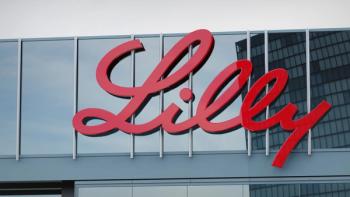
Access Insights 2024: Commercialization’s Financial Headwinds and Tailwinds
The conference’s opening keynote sets the scene for 2025 and the years to come.
Co-hosted by IntegriChain, Blue Fin Group, and Federal Compliance Solutions, the goal of the Access Insights Conference is to share the latest trends, strategies, insights, and tactics for data-driven access and commercialization. Bill Roth, general manager and managing partner of IntegriChain’s consulting business, which includes Blue Fin Group, set the tone early in his keynote surrounding “Financial Headwinds and Tailwinds to Commercialization.”1
The goal of his presentation was to:
- Offer a “Who Moved My Prescription?” conclusion
- Share what popping the gross-to-net (GTN) bubble signifies
- Describe how this will change market access and channels
- Note the ways to navigate specific archetypes and portfolios
- Provide a summary and recommend next steps
Roth started off the presentation off with plenty of honesty.
“The information I'm going present to you guys this afternoon is not rosy. We’re not in a good spot as an industry,” he said. “There are lot businesses that are in pain right now. I was really focused on this concept of pain and the concept of community, and I think that's why I'm really appreciative that Josh Halpern, our CEO, makes this happen every year—this is only about thought leadership. We're not here to sell anything. We're not here to pitch anything. This is not about money for us. This is about our industry needing help, and I think if we recognize where we have pain and we come together as a community, we'll be able to solve the problems that are in front of us.”
This statement became even more apparent when he presented a graphic that illustrated the stock performances of “Big Nine” publicly traded access and channel companies over the last decade, which would include that of: Cigna, CVS Health, McKesson, United Healthcare, Walgreens, Cencora, Humana, Rite Aid, and Cardinal Health. From the retail pharmacies that are facing the challenge of branded product abandonment to wholesalers struggling to figure specialty out, the struggles are there.
As previously alluded to, due to pharmacy pressures, brands have become increasingly unimportant to the pharmacy economic picture, Roth explained. According to Blue Fin Group proprietary research, the top 100 brands only represent 6.4% of the total unit volume, with the remaining belonging to generics. Being that low-volume branded are afterthoughts for the retailer, perhaps it’s logical that retailers wouldn’t prioritize those.
So what’s been the aftermath? Retail pharmacy has fragmented and splintered into brick-and-mortar, e-commerce/cash/telehealth/DTP, and digital integrated tech hub service solutions, given the changes in product mix, reimbursement, and the rise of cash pharmacy.
By offering a longitudinal look at a reform, his timeline showed that in 1947, healthcare operated as a cash business. “If retail fails, are we moving to a cash pay model? You don't have a cash pay model really up and running, but give Mark Cuban credit. What he did was shine a light on a problem in our industry. I'm on three generic products. I haven't used insurance for my products in five years. I've been paying cash the whole time through. So Amazon's figured it out, Cost Plus Drugs has figured it out.”
However, with retail set to lose 25-33% of their brick-and-mortar stores, ecommerce is now average wholesaler price (AWP) less 23-25%, which could ultimately mean that the market will return to mail order or cash pay, while drug shortages could potentially drive compounding.
Many manufacturers have been shocked by government policy and GTN—the government attempted to assert its influence via CMS through Medicaid, pertaining to coverage and limitations of pricing and price increases through the unit rebate amount (URA) and consumer price index for all urban consumers (CPI-U). Also, the Inflation Reduction Act (IRA) is a “double down” on Medicaid policy by applying it to Medicare, which affects commercial.
Previously, Roth noted that GTN relied on modeling the effect of decisions that were made in business silos, but nowadays, the approach is to have a forecast that spans across various aspects of industry, including statutory discounts, discounts to payers, pharmacies, group purchasing organizations (GPOs), and distributors, while describing how this changes over time.
When it comes to general medicine and specialty lite, of the 34 non-specialty drug launches last year, only one have had been verified to have met its forecast, suggesting that manufacturers are realizing that the wholesale to retail model is no longer effective for brand launches. Meanwhile, if one examines cell and gene therapies, these manufacturers are looking to get payer coverage, but instead are relying on Letters of Agreement for authorization.
Although these only represent a sliver of his points, Roth wanted to leave the audience with the following takeaways:
- Be aware of the therapeutic area, product archetype, and benefit design
- Educate management teams early on regarding changes in the market
- Design multi-generational plans beyond brand managers’ short-term decisions, which are often only 12-18 months out
- Marketing efforts, market access, trade, field, and patient affordability should be aligned with GP and finance
- Proficiency with both GTN and reimbursement forecasting is key
- Never assume that channels will be there to support
Reference
1. Financial Headwinds and Tailwinds to Commercialization. October 14, 2024. Access Insights Conference, Washington, DC.
Newsletter
Stay ahead in the life sciences industry with Pharmaceutical Commerce, the latest news, trends, and strategies in drug distribution, commercialization, and market access.





